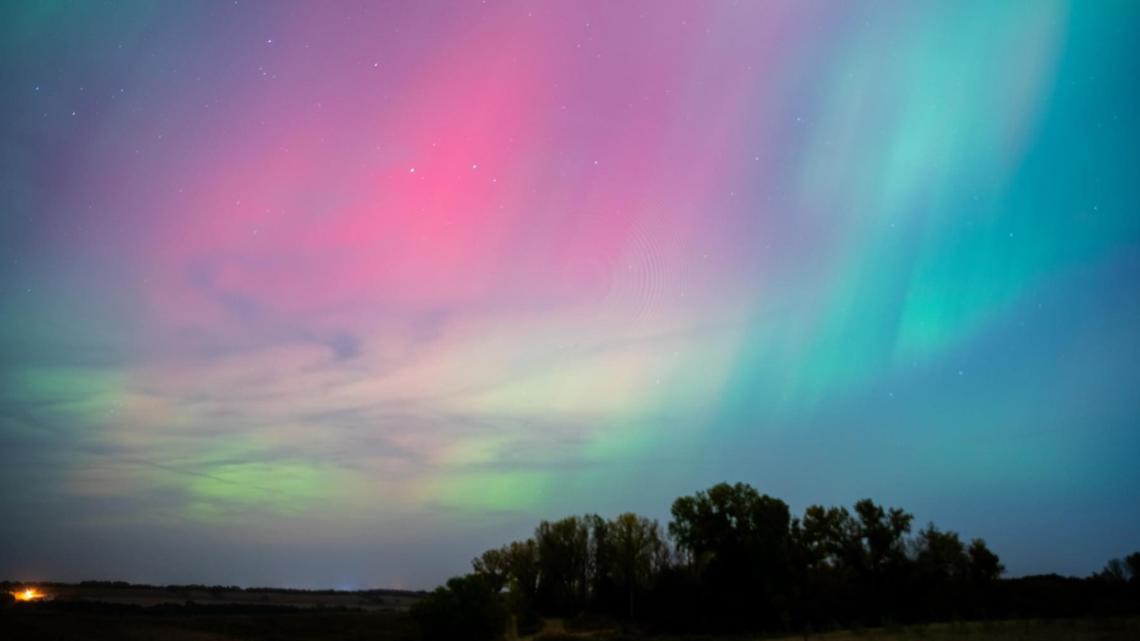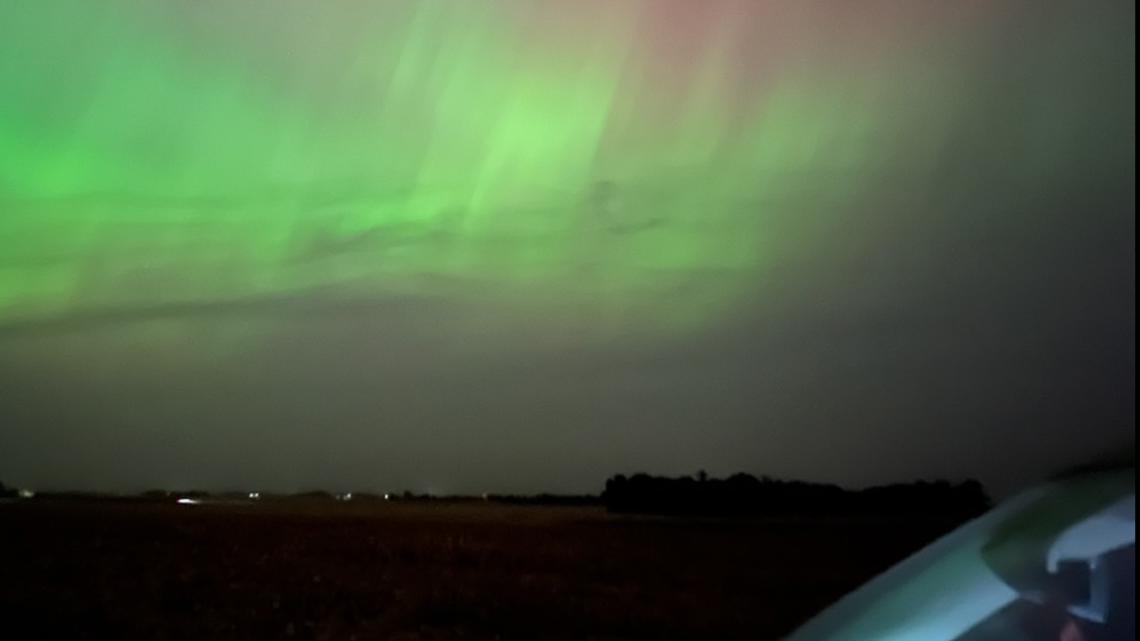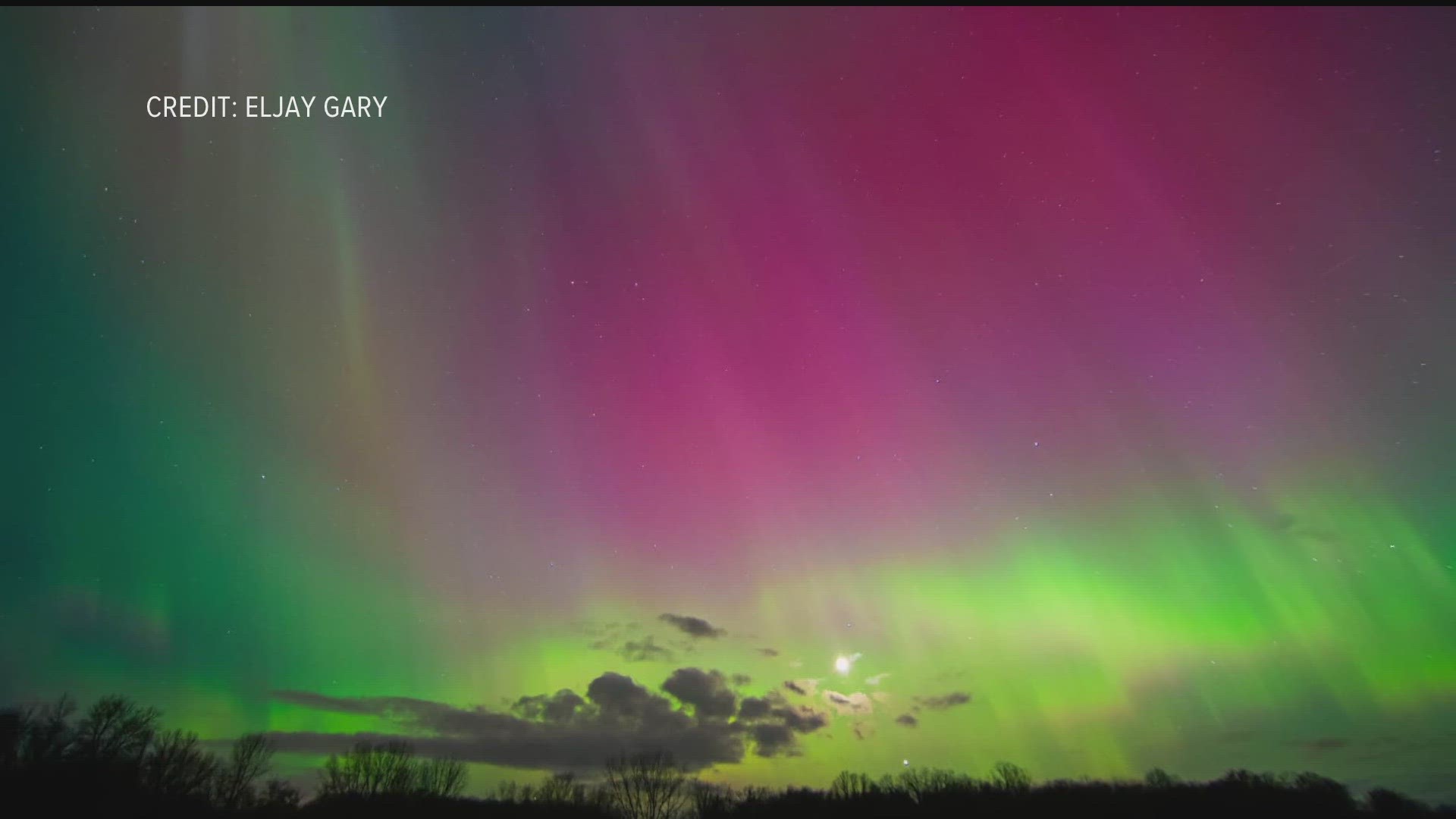GOLDEN VALLEY, Minn. — There are a lot of variables that can influence the Aurora Borealis - better known around these parts as the northern lights - and whether or not folks on the ground get a chance to enjoy them.
KARE 11's John Zeigler said those variables came together late Thursday into Friday, giving folks across Minnesota a spectacular show.
A major outburst on the sun following a solar storm earlier in the week is to thank for the northern lights last night. Zeigler explained that we assign northern lights a brightness value known as the KP Index, ranging from 1 to 10 (with 10 as the brightest). Last night the KP index exceeded eight, indicating Minnesotans would enjoy an extremely bright show if predicted cloud cover didn't elbow in.
It was perfect timing, with the northern lights visible for several hours - with 9 p.m. to 11 p.m. as peak viewing - before clouds started to roll in during the early morning hours on Friday. The temperatures last night also cooperated - in the upper 60s and low 70s across the state - giving everyone a comfortable chance to stand outside and enjoy the Aurora.


Miss the show? All is not lost, as Ziegler says the KP index will reach about five tonight, indicating there may be another chance to see the northern lights, although they will likely not be as bright as Thursday's version.


The sun sends more than heat and light to Earth — it sends energy and charged particles known as the solar wind. But sometimes that solar wind becomes a storm. The sun's outer atmosphere occasionally “burps” out huge bursts of energy called corona mass ejections. They produce solar storms, also known as geomagnetic storms, according to NOAA.
The Earth's magnetic field shields us from much of it, but particles can travel down the magnetic field lines along the north and south poles and into Earth’s atmosphere.
When the particles interact with the gases in our atmosphere, they can produce light — blue and purple from nitrogen, green and red from oxygen.
Solar activity increases and decreases in a cycle that last about 11 years, astronomers say. The sun appears to be near the peak of that cycle, known as a solar maximum. It's not clear exactly when the cycle will begin to slow.
In May, the sun shot out its biggest flare in almost two decades. That came days after severe solar storms pummeled Earth and triggered auroras in unaccustomed places across the Northern Hemisphere.
NOAA advises those who hope to see the northern lights to get away from city lights.
The best viewing time is usually within an hour or two before or after midnight, and the agency says the best occasions are around the spring and fall equinoxes due to the way the solar wind interacts with Earth’s magnetic field.
Here are some additional social posts sharing what skygazers saw Thursday and Friday.

